| Home |
| Acknowledgments |
| Conventions |
| Glossary |
| Maps |
| References |
| Links |
| Articles |
| Thumbnails |
| Species
list |
| Family |
| Next
species |
Additional Photos
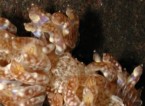
cerata detail
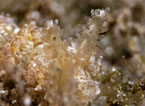
rhinophores

underside

pale
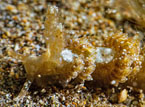
more yellow

regenerating

mating

feeding
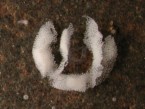
egg mass

Baeolidia scottjohnsoni Carmona, Pola, Gosliner & Cervera, 2014
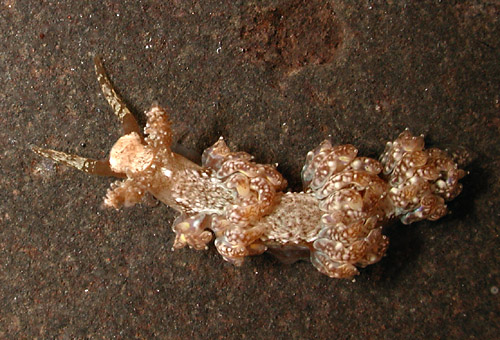
| Maximum size: 12 mm. Identification: Superficially, this species is similar to Baeolidia moebii. However, it can be distinguished from that species by the fine branches of the digestive gland in the tips of the cerata as well as the subterminal yellow and iridescent blue patches on the dorsal surfaces of the cerata. Natural history: Prior to 2021, Baeolidia scottjohnsoni was known from only three animals found in Halimeda kanaloana beds at a depth of 6-12 m (20-38 ft). However, in fall, 2021 Rebecca Bicker and Kelly McCaffrey found numerous animals at about 7 m (22 ft) in the same habitat. It feeds on the anemones Stichodactyla sp. and Bunodeopsis medusoides. (Note 1) A small cream egg mass laid in a holding dish was similar in form to that of Baeolidia salaamica rather than that of B. major. It hatched in about four days. Distribution: Maui: widely distributed in the western & central Pacific. Taxonomic notes: This species is listed on some sites as Berghia japonica or Baeolidia japonica. It was first recorded in Hawaii from Wahikuli, Maui by PF on Nov. 30, 2008. Photo: CP: 12 mm; found by PF; Wahikuli, Maui; Nov. 30, 2008. Observations and comments: Note 1: In Oct., 2010, a 9 mm animal was observed repeatedly feeding on Bunodeopsis medusoides in a holding dish over a period of several days. The anemones were collected in the same sample as the aeolid. Juvenile anemones (regurgitated, regenerating tentacles) were "captured" with the oral tentacles and sucked in like spaghetti. Larger animals were attacked from the base, after they released, with one or two bites taken per session. The mature anemones showed a strong aversive response (releasing and swimming) on contact with the aeolid. However, after attacking the mature anemones several times, the Baeolidia no longer showed interest in doing so and appeared stressed. This may have been due to other factors. But, perhaps, repeatedly attacked anemones might develop antifeedent chemicals in the manner of some plants under attack by insects? |
| Thumbnails |
Species
list |
Family | Next species | Top |